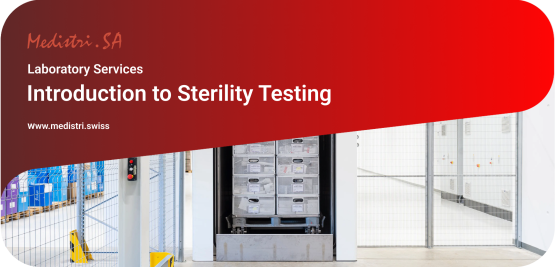(Download: Introduction to Sterility Testing in PDF by Medistri)
Reliable sterility testing and the development or validation of product-specific methods are critical steps in the drug development process.
Sterility testing is required to ensure viable contaminating microorganisms are not evident in a product. This testing is conducted by direct inoculation or membrane filtration methods and is performed in a cleanroom environment.
Sterility testing is crucial in drug development for several reasons:
- Patient Safety: The primary goal of sterility testing is to ensure patient safety. Medicinal products intended to be sterile must be free from viable microorganisms. The presence of contaminants in a supposedly sterile product can pose significant health risks to patients, including infections and other adverse reactions.
- Regulatory Compliance: Sterility testing is a regulatory requirement for the release of sterile products. Regulatory bodies such as the U.S. Food and Drug Administration (FDA) and the European Medicines Agency (EMA) require evidence of sterility for the approval of new drugs.
- Product Quality and Efficacy: Sterility testing is an essential part of quality control in pharmaceutical manufacturing. It helps ensure that the product is of high quality and effective. Contamination can affect the potency and stability of the drug, rendering it ineffective.
- Prevention of Product Recall and Financial Loss: If a product is found to be contaminated after it has been distributed, it may need to be recalled. Product recalls can lead to significant financial losses and damage to the company’s reputation.
Therefore, sterility testing plays a vital role in ensuring that drugs are safe, effective, and compliant with regulatory standards.
The preferred method is direct inoculation of culture media for bacteriology. Direct inoculation of culture media is a fundamental method in bacteriology. It involves the transfer of a sample, which could be from a clinical specimen like swabs, fluid, urine, faeces, tissue, and cannulae, directly onto a culture medium.
The culture medium is designed to promote the growth of microorganisms. It often contains nutrients and other conditions favorable for the growth of a particular type of microorganism.
There are different types of media used for inoculation, including:
Agar Plates: These are some of the most common media used for growing bacteria and other microorganisms. A mixture of agar and nutrients necessary for bacterial growth is poured into circular Petri dishes where the agar solution solidifies.
Broth Culture: This is a liquid medium suitable for growing microorganisms. A single culture of microorganism is added to a small solution to form a mixture and pipette into the liquid media.
Slant Culture: This involves the use of test tubes containing agar media that have been allowed to solidify at an angle.
Plate Culture: This involves spreading the inoculum on the surface of the agar plate.
Stab Culture: This involves inoculating an organism deep into a tube of medium.
After inoculation, the culture media are incubated under specific conditions to allow for microbial growth. The resulting colonies can then be observed and identified.
The routine sterility test at Medistri SA is performed in a cleanroom (ISO 7) under laminar flow. A cleanroom is a controlled environment where products are manufactured. It’s a room in which the concentration of airborne particles is controlled to specified limits. The ISO 7 classification for a cleanroom means that the number of particles (0.5 micrometers or larger) must not exceed 352,000 per cubic meter.
Laminar flow, on the other hand, is a type of flow in which fluids or gases move in parallel layers, with minimal disruption between the layers. In a laminar flow cleanroom, filtered air is uniformly distributed in one direction (from the ceiling towards the floor) in parallel streams. This unidirectional airflow helps to sweep away particles within the room and maintain a sterile environment.
Medistri SA has accreditation STS 504 for this analysis, both in routine testing and in validation (detection and deactivation of interference and growth inhibitors). Our procedures meet the requirements of appropriate and current versions of European and United States pharmacopeia and ISO standards.
🎯 To learn more about Medistri’s Sterility Testing, visit on our website here or directly contact our team at contact@medistri.swiss.
- The Medistri Team
#Medistri
